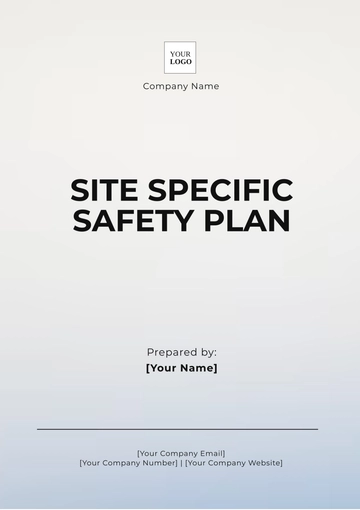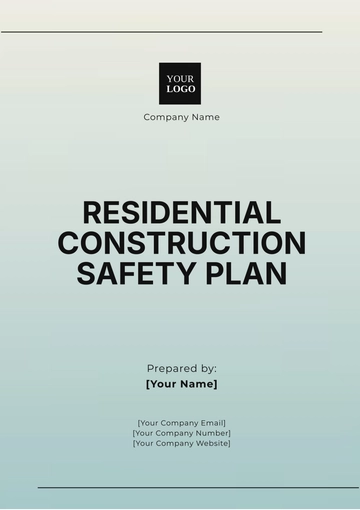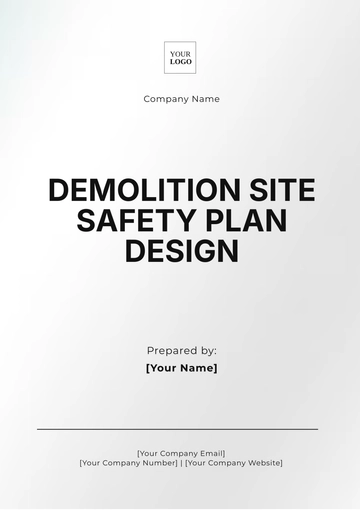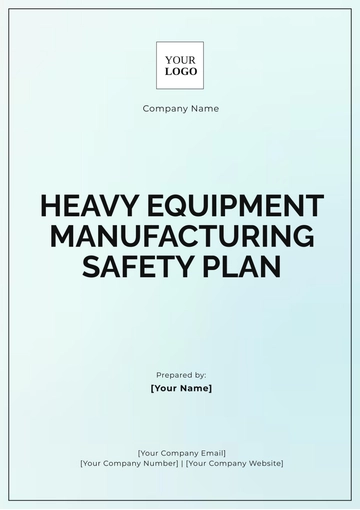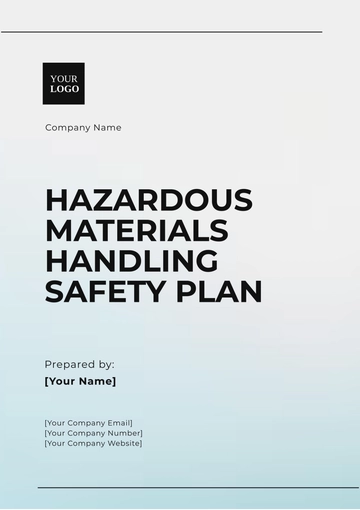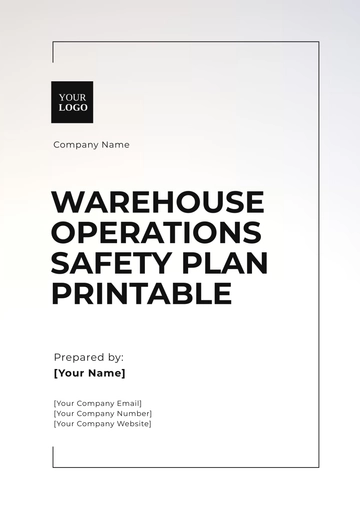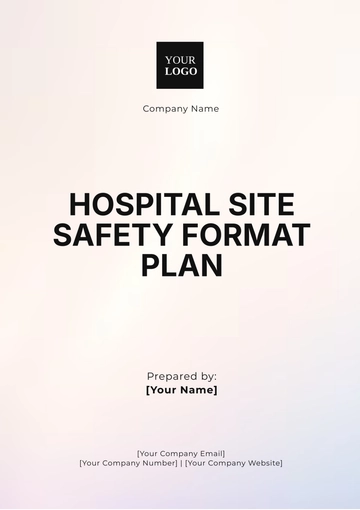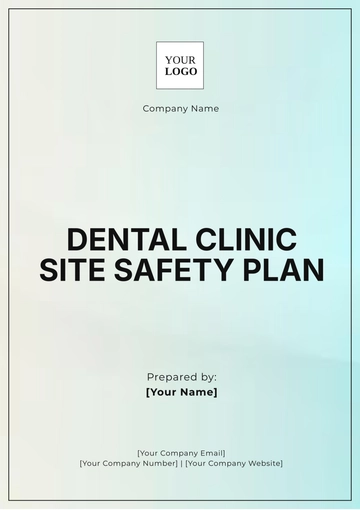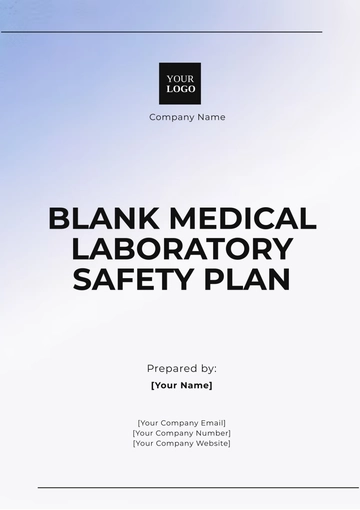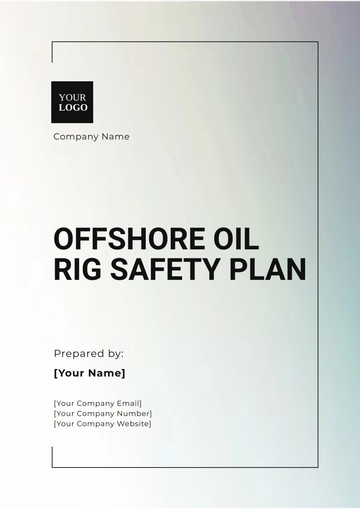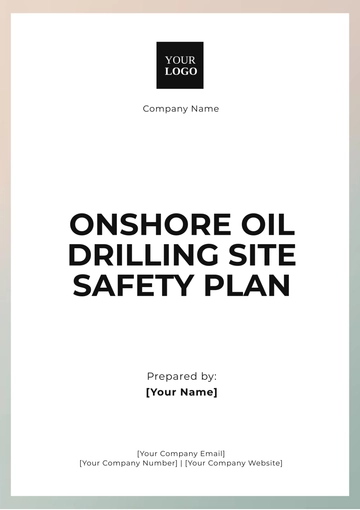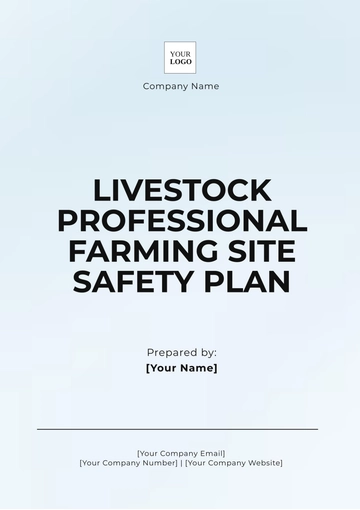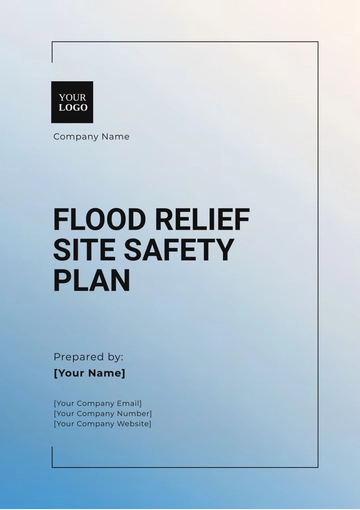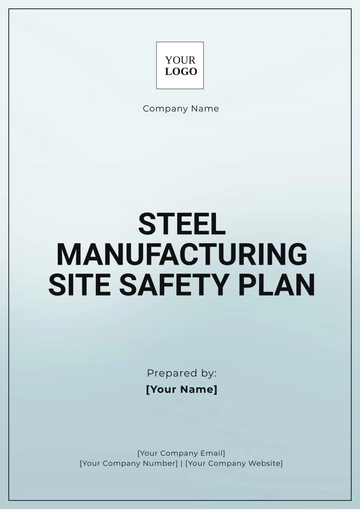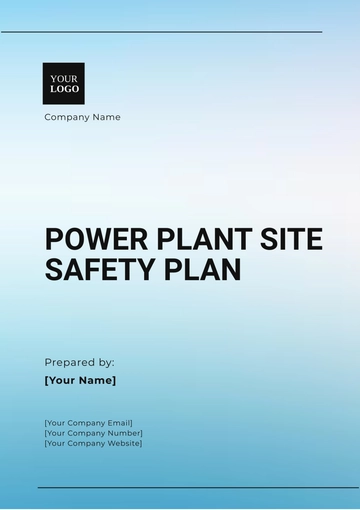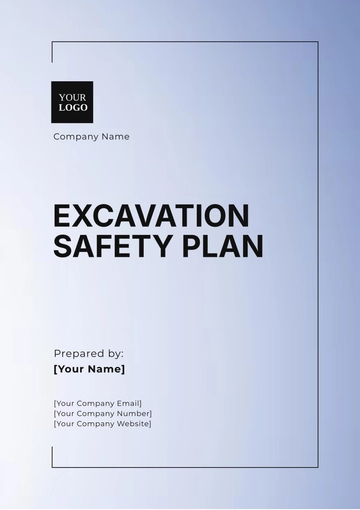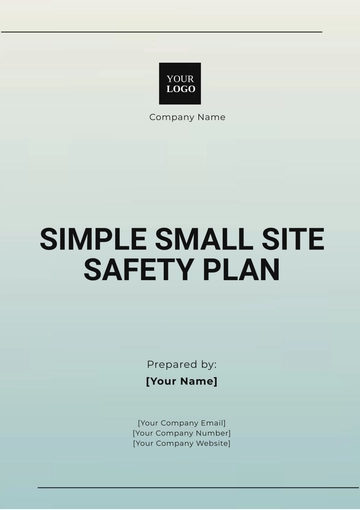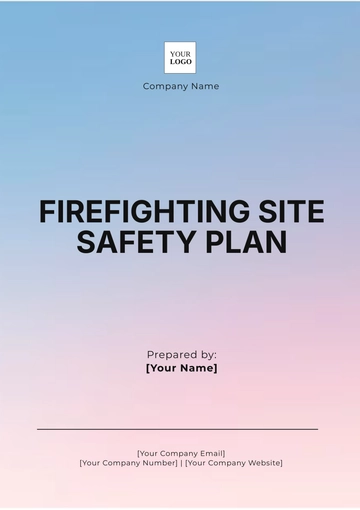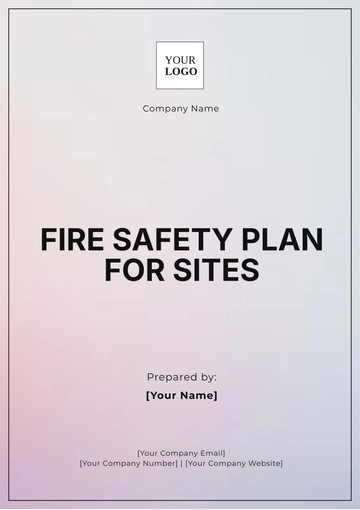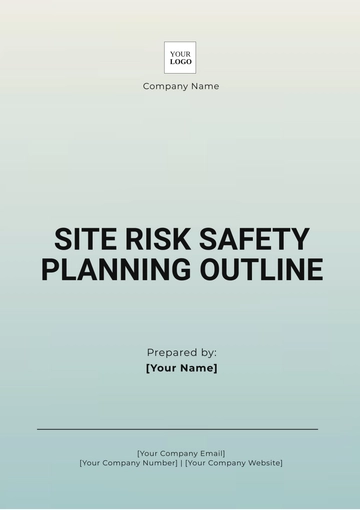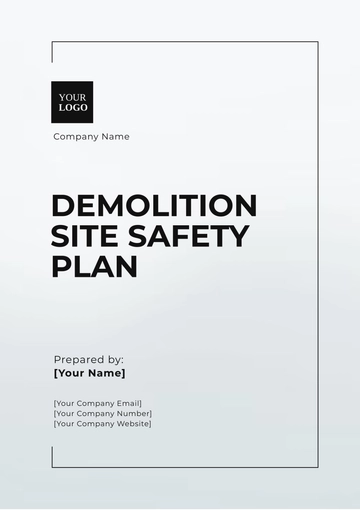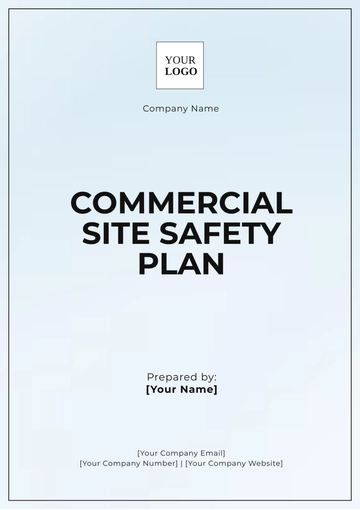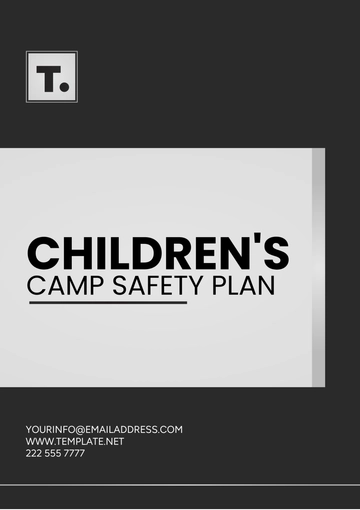Free Livestock Professional Farming Site Safety Plan
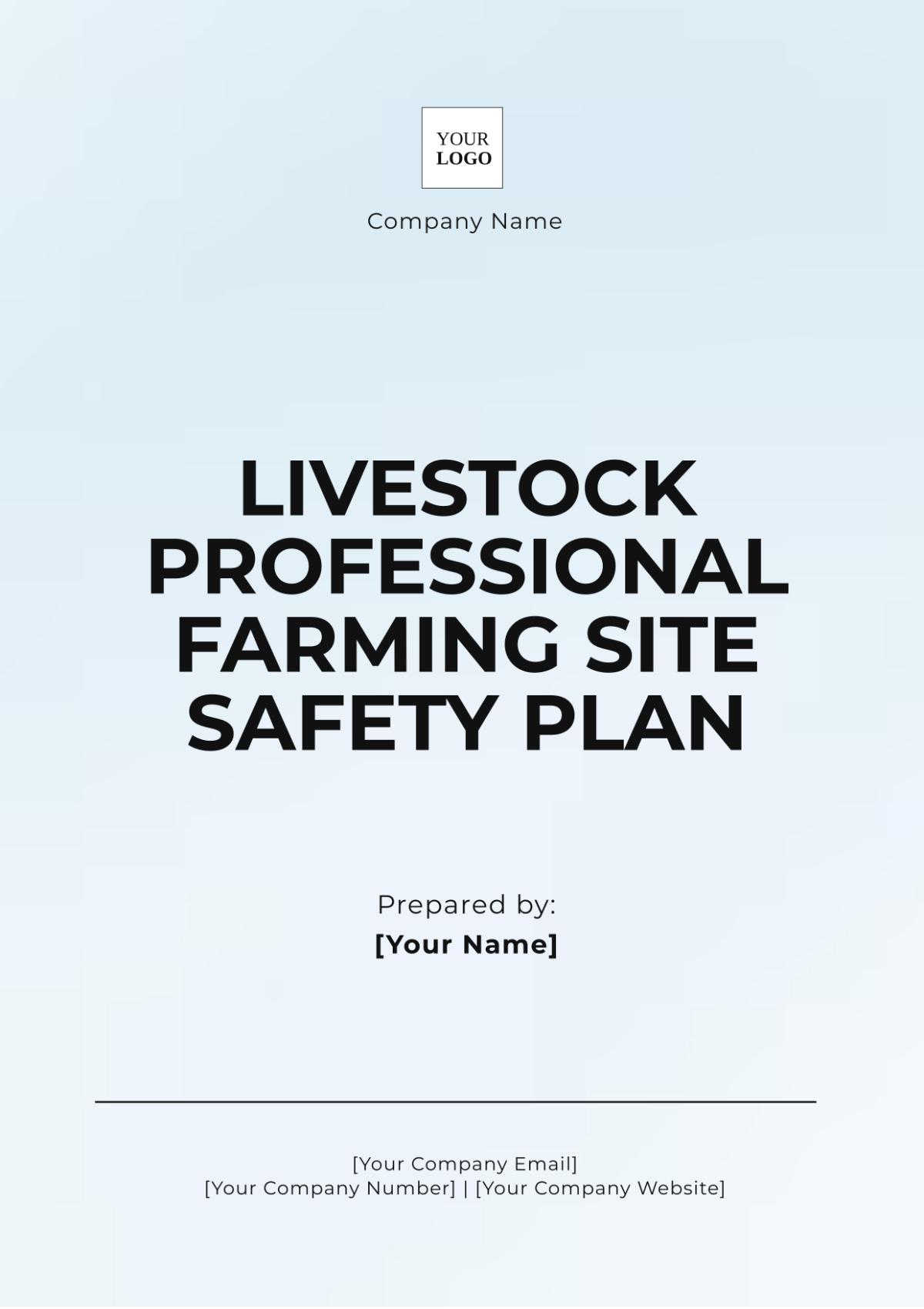
Prepared By: [Your Name]
Company: [Your Company Name]
1. Introduction
This Livestock Professional Farming Site Safety Plan is designed to ensure the safety and well-being of all workers, visitors, and animals on the farming site. The primary goal of this plan is to mitigate risks, prevent accidents, and promote a safe working environment. The plan outlines key safety procedures, emergency response protocols, hazard identification, and training programs specific to livestock farming operations. By implementing this safety plan, the farm aims to maintain high standards of safety and comply with regulatory requirements.
2. Objectives
To ensure the safety of all individuals working on or visiting the farm.
To prevent accidents and injuries through proactive risk management.
To provide comprehensive training and resources on livestock safety protocols.
To establish clear emergency response procedures in case of accidents or hazardous situations.
3. Site Overview
The farm is involved in raising and managing livestock, with areas designated for barns, feeding stations, veterinary care, grazing, and machinery storage. These areas will be closely monitored to ensure safety compliance.
4. Risk Identification
Potential risks on the farm include:
Animal-related injuries: Kicks, bites, or physical knocks.
Slips, trips, and falls: Common in barns or muddy pathways.
Machinery-related accidents: Involving tractors, loaders, or farm tools.
Chemical exposure: From veterinary medicines, fertilizers, or cleaning agents.
Heat stress: For outdoor workers, particularly in hot weather. Regular inspections and assessments will be conducted to identify, log, and mitigate these risks.
5. Personal Protective Equipment (PPE)
Workers on the farm are required to wear appropriate PPE based on their specific tasks. This may include:
Footwear: Steel-toe boots for protection against heavy equipment and animals.
Gloves: Protective gloves when handling animals or working with chemicals.
Helmets: Hard hats when working around heavy machinery.
Eye protection: Safety goggles for tasks involving dust, chemicals, or machinery.
Respirators: Masks when handling chemicals or working in environments with poor ventilation.
6. Safety Procedures
6.1 Animal Handling
Workers must receive proper training on animal behavior and handling techniques to prevent injuries.
The use of appropriate tools for moving or restraining animals is mandatory.
6.2 Machinery and Equipment
Only trained personnel may operate farm equipment.
Equipment must undergo regular maintenance to ensure safety.
6.3 Chemical Handling
Chemicals must be properly labeled and stored.
Workers handling chemicals must wear appropriate PPE and follow handling protocols.
7. Emergency Response Plan
7.1 Medical Emergencies
First Aid: First aid kits will be readily accessible. Workers will be trained in basic first aid.
Emergency Contacts: Emergency contacts for medical assistance will be posted on-site.
7.2 Fire Emergencies
Evacuation routes will be marked, and fire extinguishers will be placed at key locations across the farm.
8. Training and Education
Regular training will be provided to all workers, focusing on:
Animal handling
Proper use of PPE
Machinery safety
Emergency response procedures New employees will undergo an orientation, and refresher training will be held annually.
9. Record Keeping and Incident Reporting
All incidents and accidents must be reported immediately. Logs will be kept to track incidents and the corrective actions taken. Regular review of these records will guide safety improvements on the farm.
10. Continuous Improvement
The farm safety plan will be reviewed annually or following any significant incident or operational change. Updates will reflect changes in farm procedures, equipment, or new safety regulations to ensure ongoing improvement in safety standards.
- 100% Customizable, free editor
- Access 1 Million+ Templates, photo’s & graphics
- Download or share as a template
- Click and replace photos, graphics, text, backgrounds
- Resize, crop, AI write & more
- Access advanced editor
Enhance safety on your farm with the Livestock Professional Farming Site Safety Plan Template from Template.net. This editable and customizable template is specifically designed to address the unique challenges of livestock operations. Easily adapt the content to align with your farm's safety protocols and regulatory requirements. With its organized layout and comprehensive guidelines, you can effectively communicate essential safety measures, ensuring the well-being of both animals and workers on your site.
You may also like
- Finance Plan
- Construction Plan
- Sales Plan
- Development Plan
- Career Plan
- Budget Plan
- HR Plan
- Education Plan
- Transition Plan
- Work Plan
- Training Plan
- Communication Plan
- Operation Plan
- Health And Safety Plan
- Strategy Plan
- Professional Development Plan
- Advertising Plan
- Risk Management Plan
- Restaurant Plan
- School Plan
- Nursing Home Patient Care Plan
- Nursing Care Plan
- Plan Event
- Startup Plan
- Social Media Plan
- Staffing Plan
- Annual Plan
- Content Plan
- Payment Plan
- Implementation Plan
- Hotel Plan
- Workout Plan
- Accounting Plan
- Campaign Plan
- Essay Plan
- 30 60 90 Day Plan
- Research Plan
- Recruitment Plan
- 90 Day Plan
- Quarterly Plan
- Emergency Plan
- 5 Year Plan
- Gym Plan
- Personal Plan
- IT and Software Plan
- Treatment Plan
- Real Estate Plan
- Law Firm Plan
- Healthcare Plan
- Improvement Plan
- Media Plan
- 5 Year Business Plan
- Learning Plan
- Marketing Campaign Plan
- Travel Agency Plan
- Cleaning Services Plan
- Interior Design Plan
- Performance Plan
- PR Plan
- Birth Plan
- Life Plan
- SEO Plan
- Disaster Recovery Plan
- Continuity Plan
- Launch Plan
- Legal Plan
- Behavior Plan
- Performance Improvement Plan
- Salon Plan
- Security Plan
- Security Management Plan
- Employee Development Plan
- Quality Plan
- Service Improvement Plan
- Growth Plan
- Incident Response Plan
- Basketball Plan
- Emergency Action Plan
- Product Launch Plan
- Spa Plan
- Employee Training Plan
- Data Analysis Plan
- Employee Action Plan
- Territory Plan
- Audit Plan
- Classroom Plan
- Activity Plan
- Parenting Plan
- Care Plan
- Project Execution Plan
- Exercise Plan
- Internship Plan
- Software Development Plan
- Continuous Improvement Plan
- Leave Plan
- 90 Day Sales Plan
- Advertising Agency Plan
- Employee Transition Plan
- Smart Action Plan
- Workplace Safety Plan
- Behavior Change Plan
- Contingency Plan
- Continuity of Operations Plan
- Health Plan
- Quality Control Plan
- Self Plan
- Sports Development Plan
- Change Management Plan
- Ecommerce Plan
- Personal Financial Plan
- Process Improvement Plan
- 30-60-90 Day Sales Plan
- Crisis Management Plan
- Engagement Plan
- Execution Plan
- Pandemic Plan
- Quality Assurance Plan
- Service Continuity Plan
- Agile Project Plan
- Fundraising Plan
- Job Transition Plan
- Asset Maintenance Plan
- Maintenance Plan
- Software Test Plan
- Staff Training and Development Plan
- 3 Year Plan
- Brand Activation Plan
- Release Plan
- Resource Plan
- Risk Mitigation Plan
- Teacher Plan
- 30 60 90 Day Plan for New Manager
- Food Safety Plan
- Food Truck Plan
- Hiring Plan
- Quality Management Plan
- Wellness Plan
- Behavior Intervention Plan
- Bonus Plan
- Investment Plan
- Maternity Leave Plan
- Pandemic Response Plan
- Succession Planning
- Coaching Plan
- Configuration Management Plan
- Remote Work Plan
- Self Care Plan
- Teaching Plan
- 100-Day Plan
- HACCP Plan
- Student Plan
- Sustainability Plan
- 30 60 90 Day Plan for Interview
- Access Plan
- Site Specific Safety Plan
